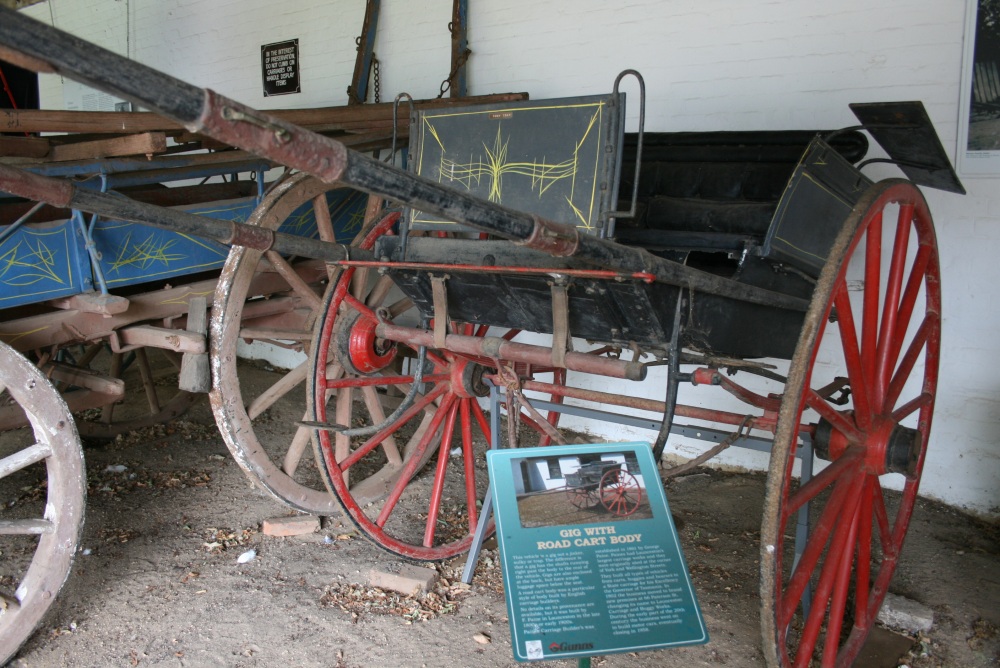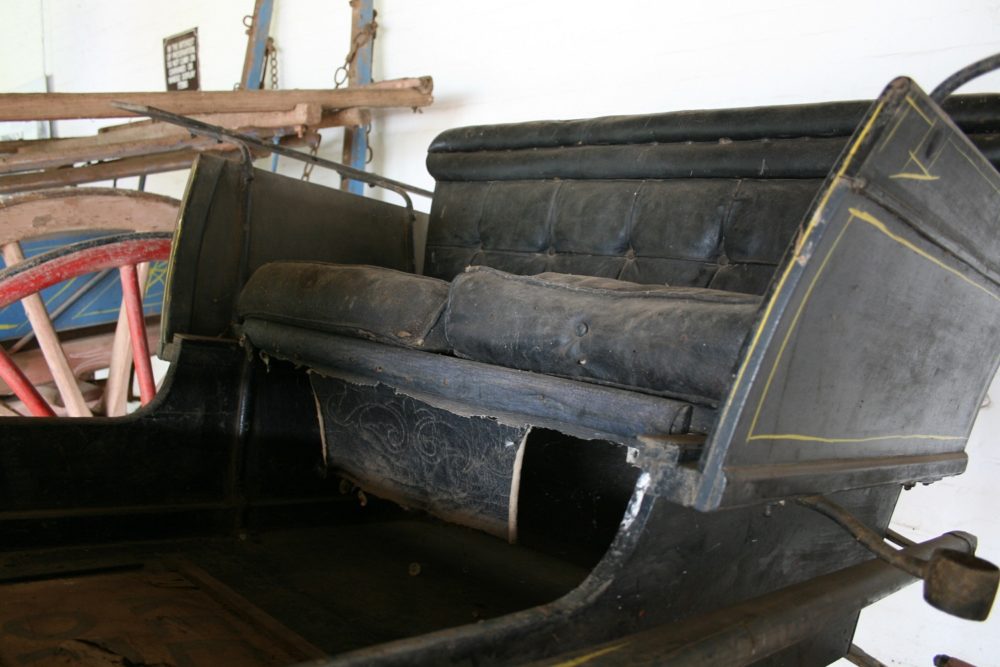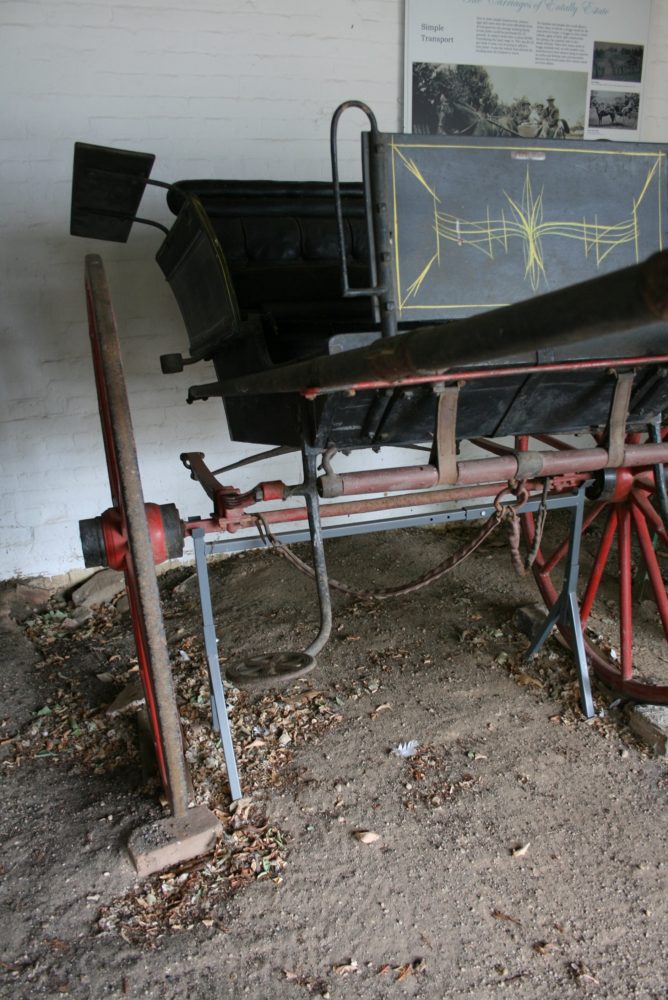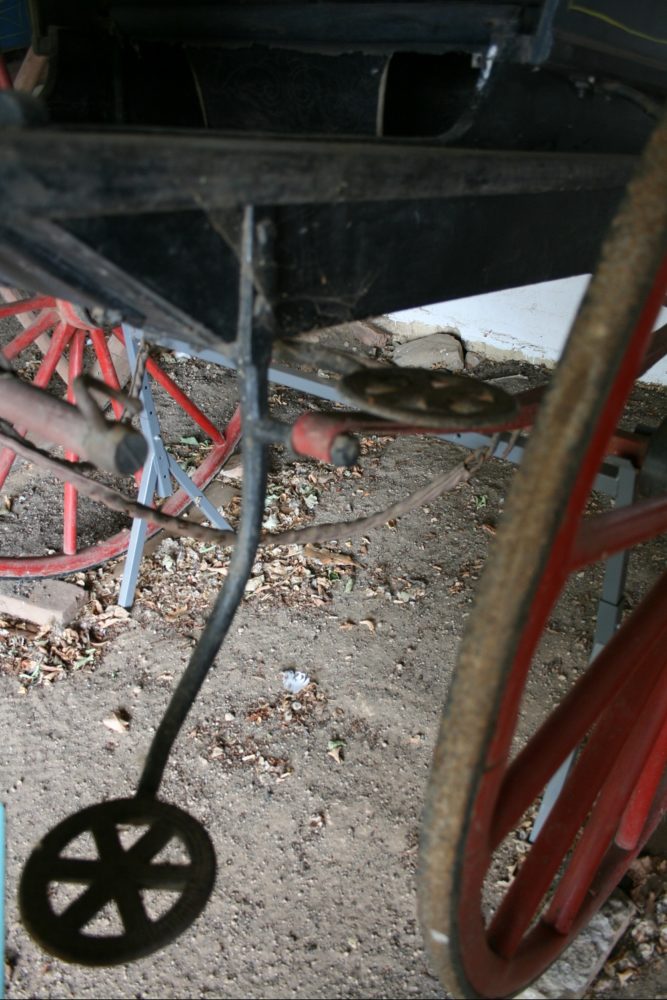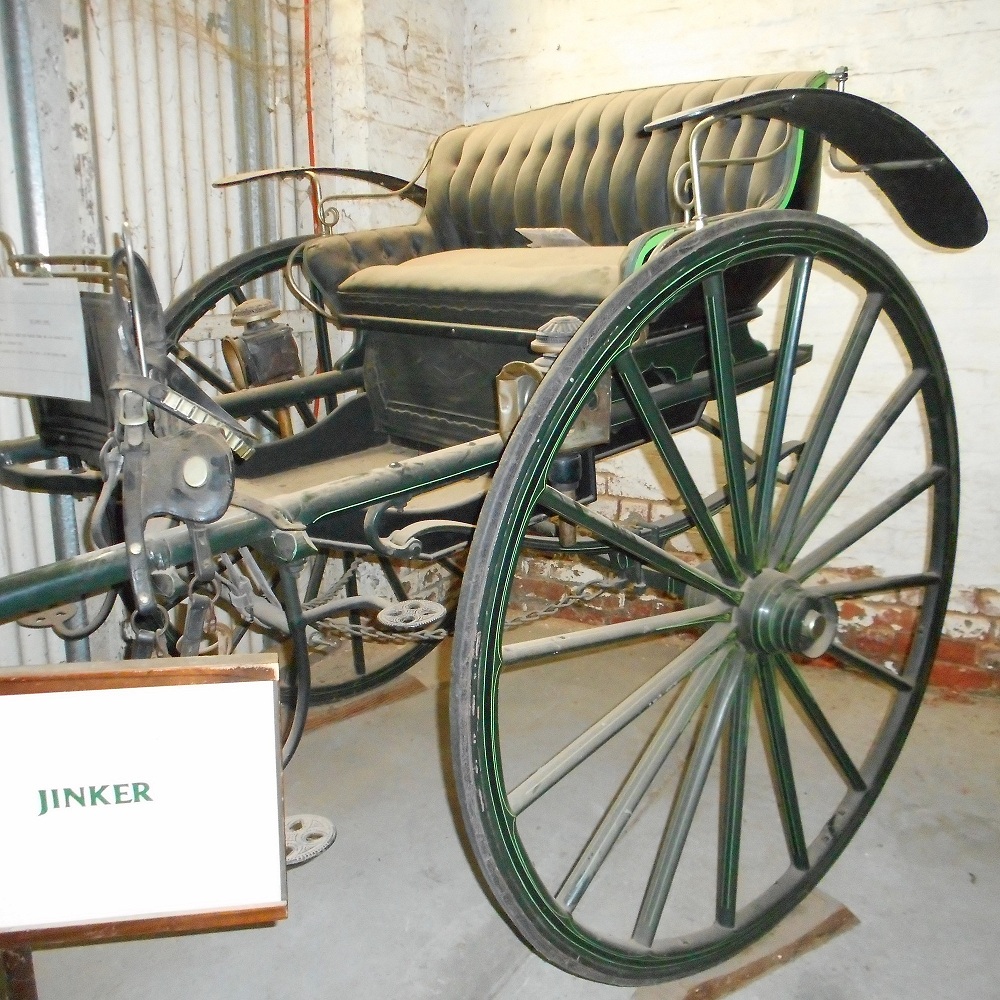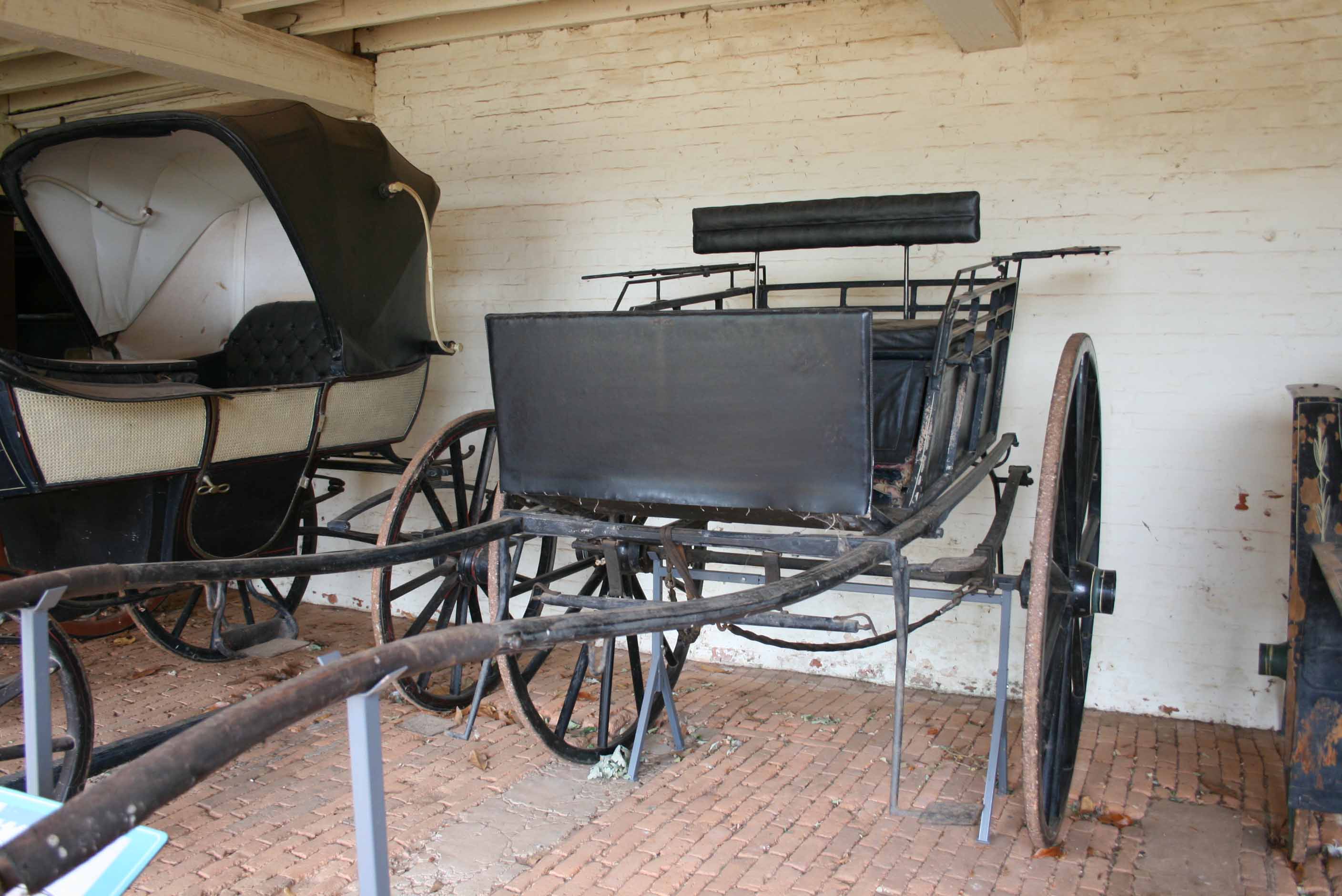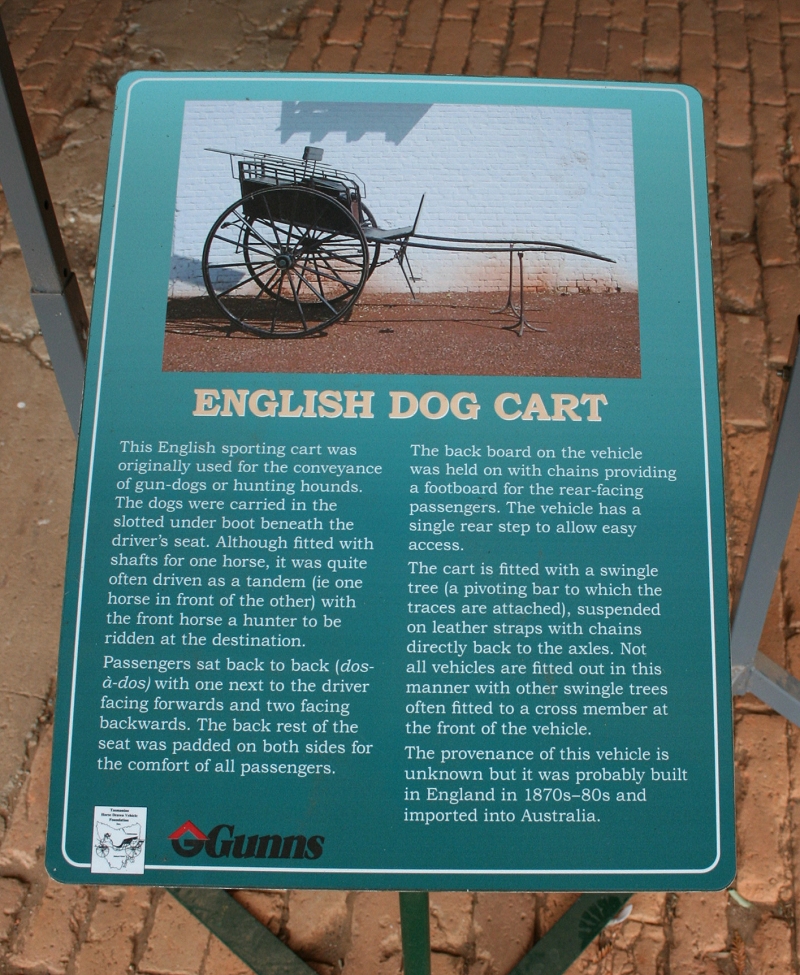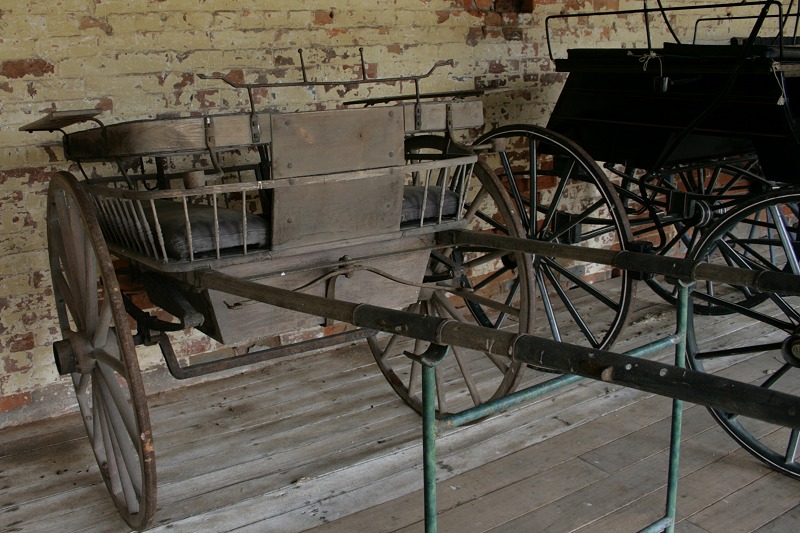(Larger image)
This is a light, two-wheeled horse-drawn vehicle. But how does it differ from other light, two-wheeled horse-drawn vehicles like gigs and sulkies? Short answer, it doesn't.
From "Sulkies, Whiskeys and Gigs" by Jeff Powell, Curator, Cobb & Co Museum in the Australian Carriage Driving Society Show Driving Handbook (PDF):
From Cooktown to Kalgoorlie and Cape Byron to Broome, the sulky was the most popular horse-drawn vehicle in Australia. These two-wheeled passenger vehicles, also known as gigs or jinkers in Victoria, could be found in every town and country district. Sulkies were light and stylish yet surprisingly robust. Many were still plying country tracks in the middle of the 20th century, long after other horse-drawn vehicles had disappeared from the road.
(Not to be confused with a timber-hauling jinker, which has little in common other than power source.)
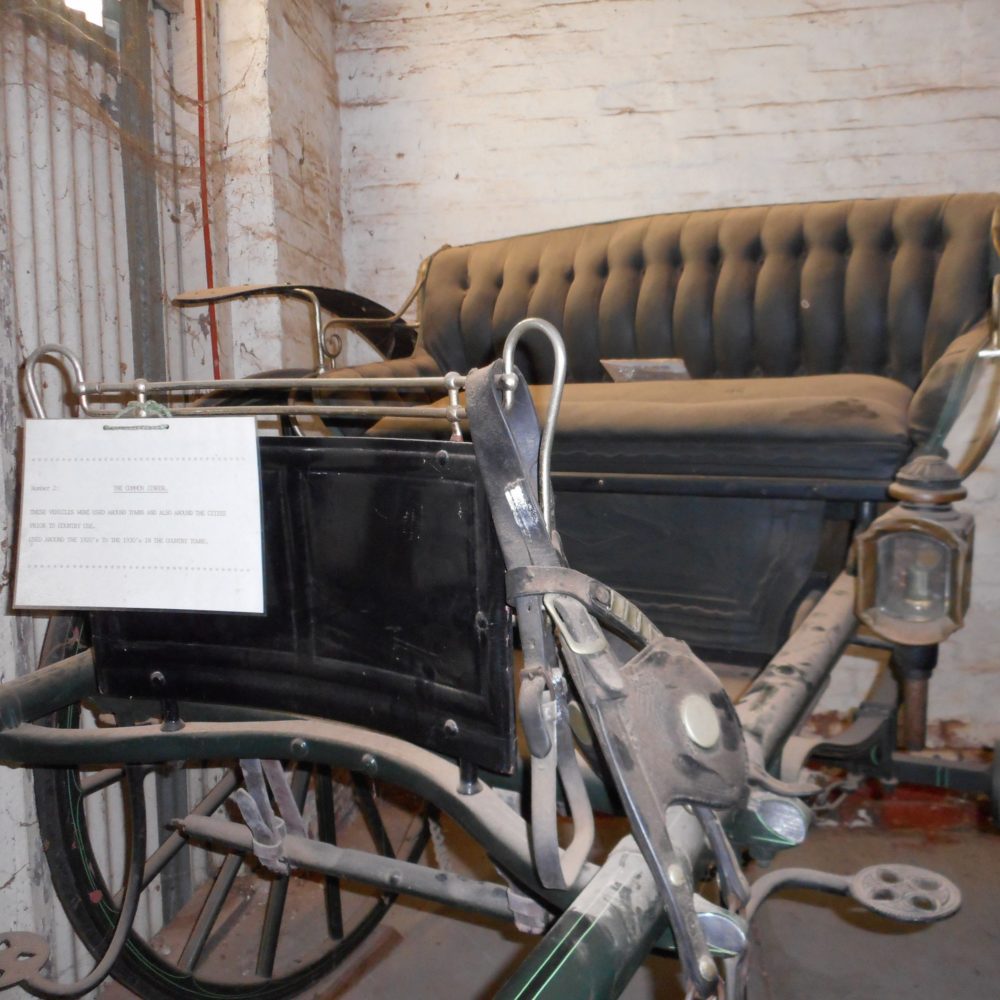
The bit on the front says:
The Common Jinker
These vehicles were used around towns and also around the cities prior to country use.
Used around the 1920's to the 1930's in the country towns.
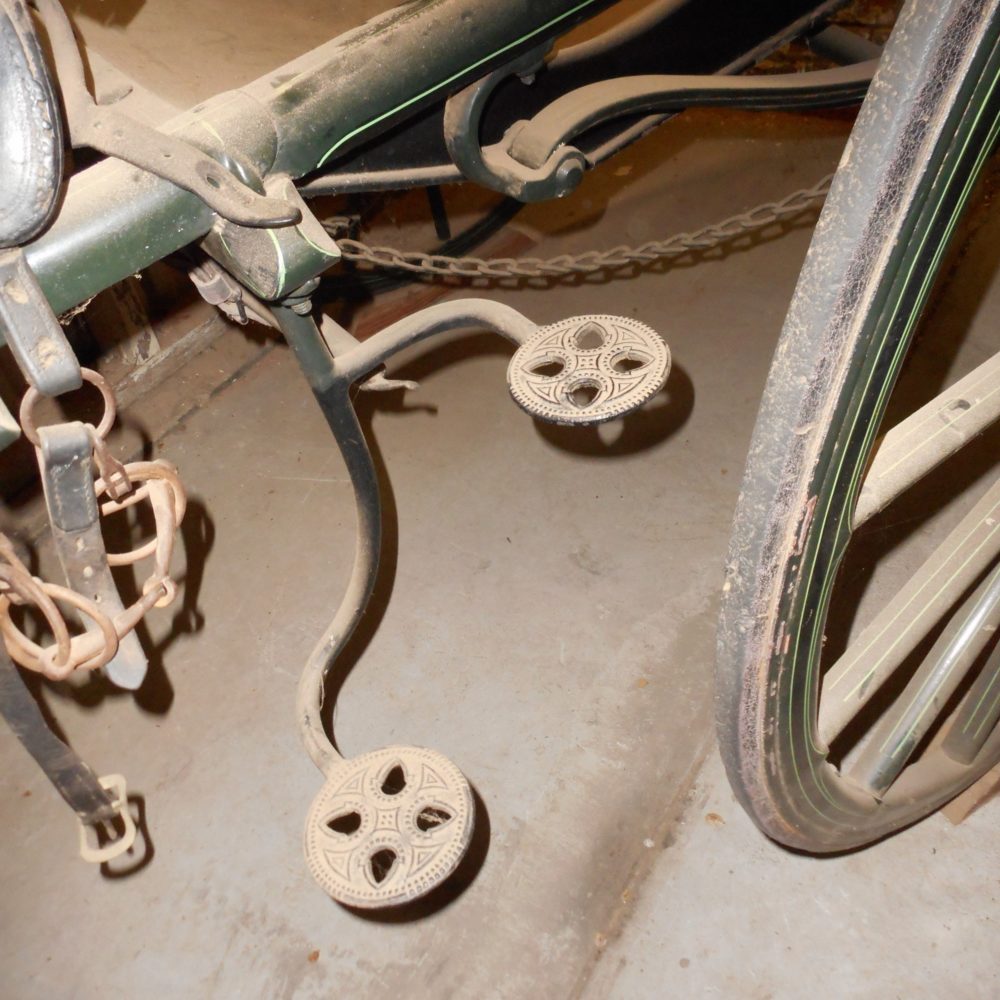
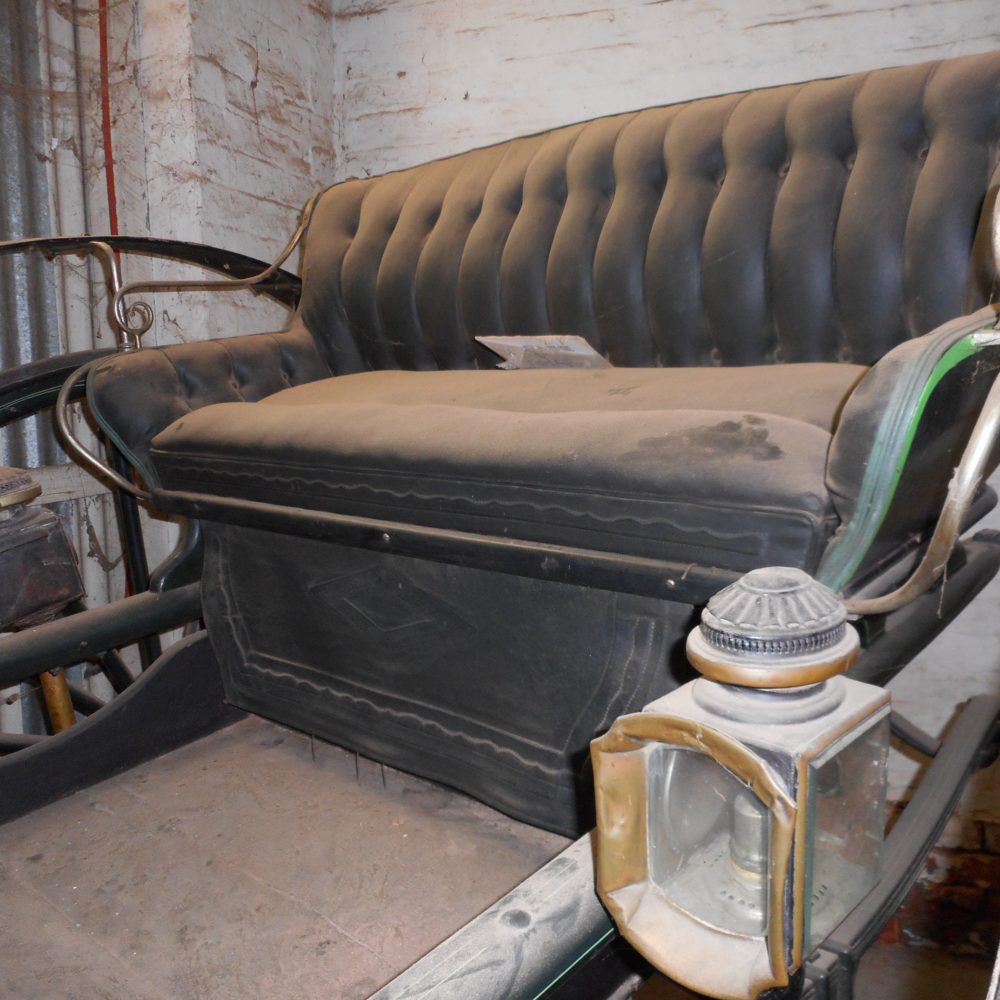
From Beechworth Carriage Museum.
